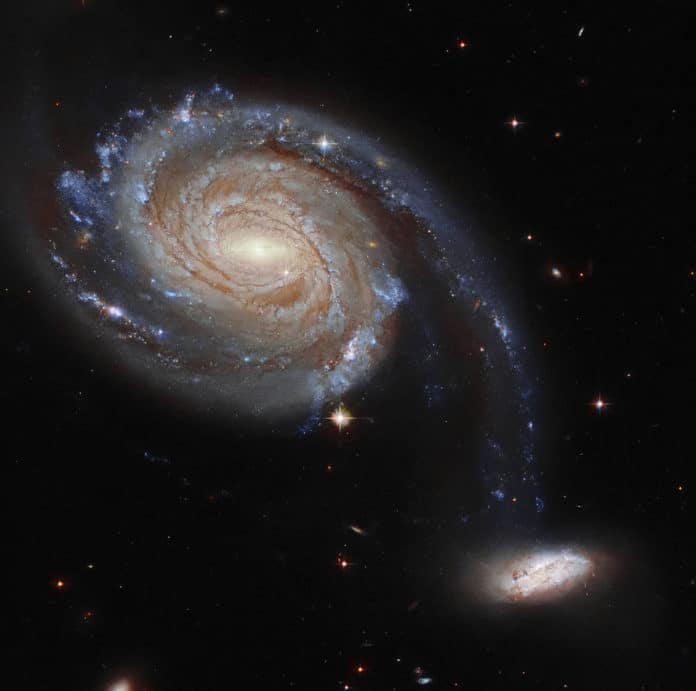NASA/ESA Hubble Space Telescope recently observed a peculiar pair of interacting galaxies almost 220 million light-years from Earth. Named as ARP 86, the system lies in the constellation Pegasus.
The ARP 86 consists of two interacting galaxies, NGC 7752 and NGC 7753. NGC 7753 is the large spiral galaxy dominating this image, and NGC 7752 is its smaller companion. These two galaxies are locked in a cosmic dance, called intergalactic dance.
The gravitational pull between them will result in the smaller galaxy being tossed out into space or engulfed by its larger neighbor.
The observation of Arp 86 could help astronomers understand the connections between young stars and the clouds of cold gas in which they form.
Combined with measurements from ALMA, a gigantic radio telescope perched high in the Chilean Andes, these Hubble observations provide a treasure trove of data for astronomers working to understand how stars are born.
